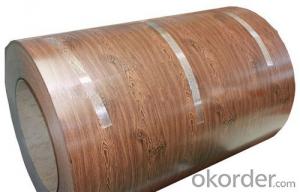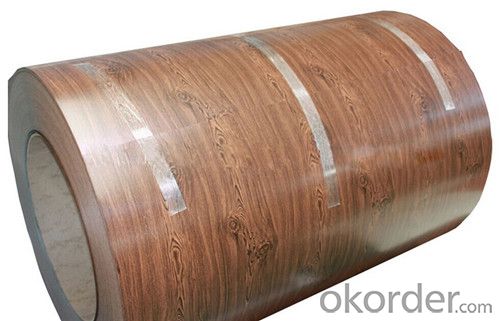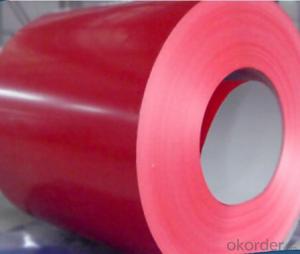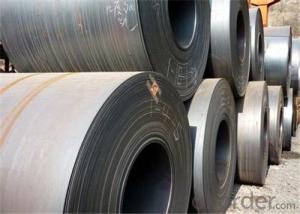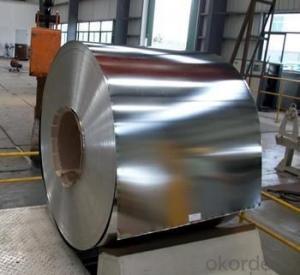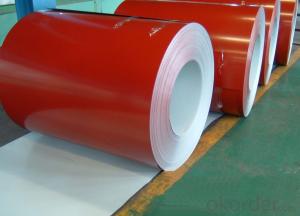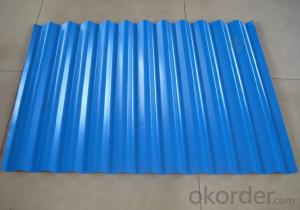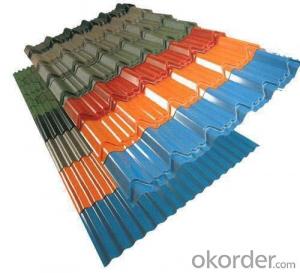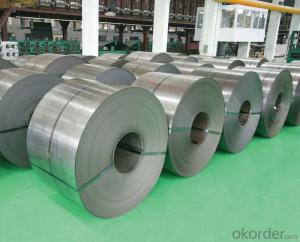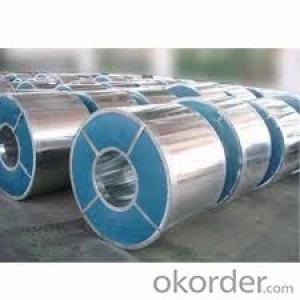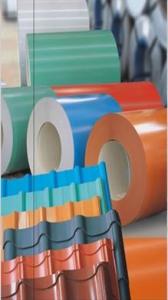Color Coated galvanized Cold Rolled Steel Coil
- Loading Port:
- Tianjin
- Payment Terms:
- TT OR LC
- Min Order Qty:
- 20 m.t.
- Supply Capability:
- 300 m.t./month
OKorder Service Pledge
Quality Product, Order Online Tracking, Timely Delivery
OKorder Financial Service
Credit Rating, Credit Services, Credit Purchasing
You Might Also Like
Prepainted steel coil
Specifications
1.Standard: ASTM,GB,JIS
2.Grade : DX51D+Z
3.Thickness: 0.18-1.5mm
4.Width:914-1250mm
5.Top paint:20mil,Black paint:7mil
6. Technical/Surface treatment: color coated/galvanized/galvalume
7..Useage: widely used in construction,home,appliance,decoration,wear resistant steel,etc.
Advantages:
1. more than 10 years experiences in steel b2usiness
2. good quality
3. competitive price
4. meet your needs via reprocessing
5. excellent service
6. short delivery time
| Commodity : | Prepainted steel coil /PPGI /PPGL |
| Materials Grade: | SGCC ,CGCC ,DX51D+Z ,SGLCC |
| Thickness : | 0.17-1.2mm |
| Width : | 914mm,1219mm,1000mm,1220mm,1250mm ( can cut to strip above 30mm width ) |
| Zinc coating : | 60-275g/sqm |
| Surface Structure: | Galvanized Or Aluzinc |
| Color : | RAL No. or Sample color |
| Painting : | Top : 5micron primer +15-20microns polyester Back : 5-8microns primer epoxy |
| Coil Weight : | 2-6mts |
| Payment term : | TT ,L/C AT SIGHT , USANCE L/C ,D/P |
| Shipment : | 20 feet container or bulk ship |
| Remark : | We accept the third-party inspection ,such as SGS , INSPECTORATE ,CIQ |
- Q: Hello, Do I make any damage to my stainless steel sink by cleaning it with clorox? Thank you!
- Bleach Stainless Steel Sink
- Q: What are the different types of steel surface treatments for coils?
- There are several types of steel surface treatments for coils, including galvanizing, electroplating, powder coating, and painting.
- Q: What are the challenges in coil recoiling?
- Coil recoiling, which is also known as coil winding, brings about a range of challenges that depend on the specific application and requirements. Some of the common hurdles encountered in coil recoiling are as follows: 1. Precision and accuracy: Achieving precise and accurate winding is vital for optimal coil performance. It is crucial to maintain consistent tension throughout the winding process, ensure proper alignment, and control the speed in order to prevent variations in the electrical properties of the coil. 2. Wire management: Managing the wire during the recoiling process can be difficult. The wire may be fragile, prone to tangling, or have specific handling requirements, such as being sensitive to magnetic or thermal influences. Employing proper wire management techniques, such as tension control, wire guide systems, and spooling mechanisms, is necessary to prevent wire damage and ensure uniform winding. 3. Space limitations: In many cases, coils need to fit within specific space constraints. Designing and winding coils to fit compact spaces can be challenging, particularly when considering the required number of turns, wire size, insulation, and any additional components or structures that may need to be incorporated. 4. Material selection: The selection of the appropriate wire and insulation material is crucial for optimal coil performance and durability. Factors such as electrical conductivity, thermal properties, mechanical strength, and chemical resistance must be taken into account to ensure that the coil can withstand the operating conditions and environmental factors it will encounter. 5. Heat dissipation: Coils often generate heat during operation, especially in high-power applications. Efficient heat dissipation is crucial to prevent overheating and ensure the longevity of the coil. Techniques such as designing the coil with proper ventilation, utilizing cooling mechanisms, or incorporating heat sinks are employed to address this challenge. 6. Quality control: Ensuring consistent quality in coil recoiling can be challenging due to factors such as variations in wire properties, operator skill, equipment calibration, and environmental conditions. Robust quality control measures, such as conducting regular inspections, performing electrical tests, and monitoring process parameters, need to be implemented to maintain consistent coil performance. In summary, coil recoiling demands meticulous attention, precision, and adherence to specific requirements in order to overcome the challenges and produce high-quality coils that meet the desired performance criteria.
- Q: What are the characteristics of hot-rolled steel coils and cold rolled steel coils? What loading and unloading tools should be used? What items should be paid attention to?
- Steel is usually stable in performance. One thing is that the environment should be dry, not rain, because the damp environment is easy to rust. As long as it's in a dry room, it's basically no problem.
- Q: Can steel coils be bent or formed into different shapes?
- Steel coils have the capability to be bent or molded into diverse forms. Typically, steel coils are produced from flexible flat rolled steel, allowing for easy manipulation. The process of bending entails exerting force upon the steel coil, resulting in a transformation of shape and the adoption of different configurations. This can be accomplished through a variety of techniques, including cold or hot bending, as well as the utilization of specialized machinery such as a press brake. By skillfully applying the appropriate amount of force and heat, steel coils can be bent or molded into an extensive array of shapes, encompassing curves, angles, and intricate geometries. This adaptability in shaping steel coils renders them exceptionally versatile for an array of applications, spanning construction, manufacturing, automotive, and numerous other industries.
- Q: How are steel coils used in the production of metal shelving?
- Steel coils are used in the production of metal shelving by being processed and formed into the desired shape and size. The coils are unwound and then either cut or shaped using various techniques such as bending, welding, and punching. This allows for the creation of sturdy and durable shelves that can hold heavy loads.
- Q: How are steel coils used in the production of containers?
- Steel coils are used in the production of containers as they are the primary material for manufacturing container bodies. These coils are shaped and welded into the desired container shape, providing strength and durability to the final product.
- Q: the difference between the original steel and mild steel from percentage of carbon
- As the first answers suggest, the prolbem is that these terms are not specific, they are not scientifically or technically defined. This is like asking: what is the difference between a four door car and a sedan? There are hundreds of steel alloys ranging from Fe + a little C + very little else to alloy and tool steels with significant amounts of Cr, Ni, Si, and a number of other elements + C. And... for any given steel alloy, there are many different ways to heat treat it. A given piece of steel can be heat treated so hard and brittle that it could shatter like glass and then it could be heat treated to make it into a spring or heat treated to make it stretch like taffy. If you really want to understand steels, yes, there are lots of books on sword making (some written by people who actually understand steels) but... you need to study metallurgy. There are graduate level courses just on the metallurgy of steels. Of course to understand this course you need to understand a whole lot of fundamental metallurgy. All this stuff on steel makes perfect sense because, in terms of weight (tonage) produced, steel is, hands down, nothing else remotely comes close, the most important metal humans have.
- Q: How are steel coils used in the manufacturing of automotive fuel tanks?
- Steel coils are used in the manufacturing of automotive fuel tanks as they provide strength and durability to the tanks. These coils are formed into the desired shape and welded together to create a sturdy container that can withstand the pressure and impact of the fuel. Additionally, steel coils can be coated to prevent corrosion and ensure the longevity of the fuel tank.
- Q: I know that the steel is significantly harder than when air cooled, but why is the quenched steel harder?
- Quenching results in smaller grains than air cooled. This means more boundaries, which means harder steel.
Send your message to us
Color Coated galvanized Cold Rolled Steel Coil
- Loading Port:
- Tianjin
- Payment Terms:
- TT OR LC
- Min Order Qty:
- 20 m.t.
- Supply Capability:
- 300 m.t./month
OKorder Service Pledge
Quality Product, Order Online Tracking, Timely Delivery
OKorder Financial Service
Credit Rating, Credit Services, Credit Purchasing
Similar products
Hot products
Hot Searches
Related keywords
